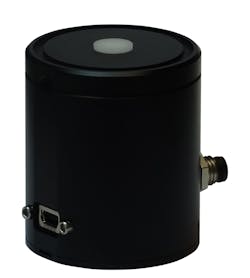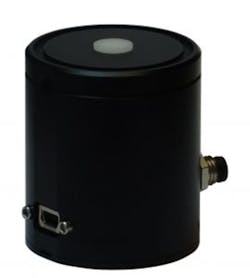Amesbury, MA. Gigahertz-Optik GmbH has announced that its new CSS-45 packs the full power and capability of a spectroradiometer into a self-contained compact metal housing only 1.75 inches in diameter by 2 inches high. The CSS-45 covers a spectral range between 360 nm and 830 nm (extended visible spectral range according to CIE S023).
The spectral detector head attaches to a PC via a one-meter-long USB cable. The USB interface handles the power requirements. Supplied software controls all measurement, data readout, and collection. An SDK is available for self-programmers.
A unique feature is the CSS-45 RS485 interface to permit fast communications with the device at longer distances for remote applications, the company said.
Every CSS-45 comes calibrated and certified by Gigahertz-Optik’s calibration laboratory that is accredited by DAkkS (D-K-15047-01-00) for spectral responsivity and spectral irradiance calibrations according to ISO/IEC 17025.
Special applications include horticultural lighting, human-centric lighting, and phototherapy.
About the Author

Rick Nelson
Contributing Editor
Rick is currently Contributing Technical Editor. He was Executive Editor for EE in 2011-2018. Previously he served on several publications, including EDN and Vision Systems Design, and has received awards for signed editorials from the American Society of Business Publication Editors. He began as a design engineer at General Electric and Litton Industries and earned a BSEE degree from Penn State.

